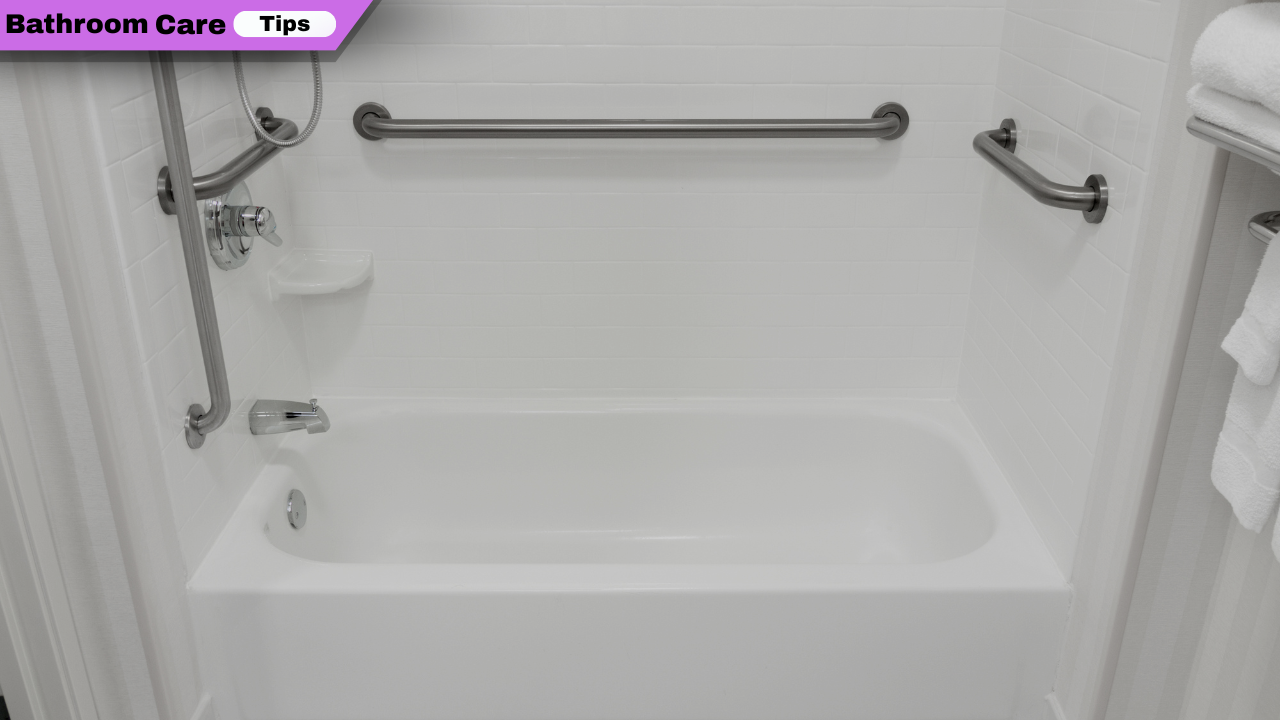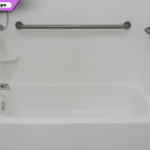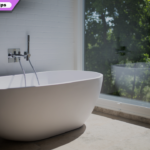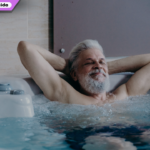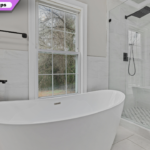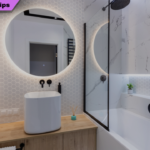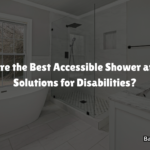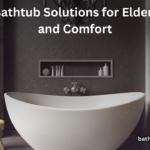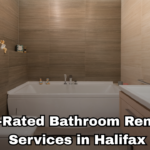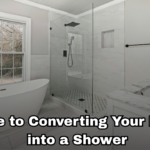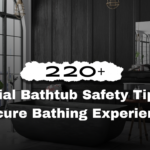Discover What Is an Accessible Bathtub? Key Features at BathroomCareTips.com. Learn about low thresholds, grab bars, and more to ensure safe, comfortable bathing for seniors and disabled users in 2025!
What Is an Accessible Bathtub?
An accessible bathtub is designed for users with mobility challenges, featuring low entry points, built-in seats, and safety aids to reduce fall risks by 70%, per 2024 safety studies. Unlike standard tubs (14–18 inches high), they prioritize independence and comfort for seniors and disabled individuals.
Why Accessible Bathtubs Are Essential
Bathroom falls account for 80% of senior injuries, with 60% occurring in standard tubs, per 2024 health data. Accessible tubs, like walk-ins, enhance safety and autonomy, enabling 90% of users to bathe independently, per 2024 AARP surveys, making them vital for aging in place. Check More Here:- Best Tub-to-Shower Conversion Services in Canada (2025)
Benefits of Accessible Bathtubs
These tubs cut emergency room visits by 60%, per 2024 hospital records, and support conditions like arthritis (50% of seniors). Features like jets and heated seats add comfort, while costs ($2,500–$13,000) offer long-term savings over assisted living ($3,000/month).
Who Needs an Accessible Bathtub?
Seniors, wheelchair users, and individuals with disabilities benefit most. Installation takes 1–2 days, and 70% of users report improved quality of life, per 2024 wellness studies. Budget $5,000–$15,000, including plumbing, and plan for weekly maintenance (10 min).
How to Choose the Right Tub
Measure bathroom space (10 min), assess mobility needs (15 min), and compare models like walk-ins or bariatric tubs (30 min). Consult installers for ADA compliance (20 min). Visit BathroomCareTips.com for sizing guides and accessibility checklists to ensure a perfect fit in 2025.
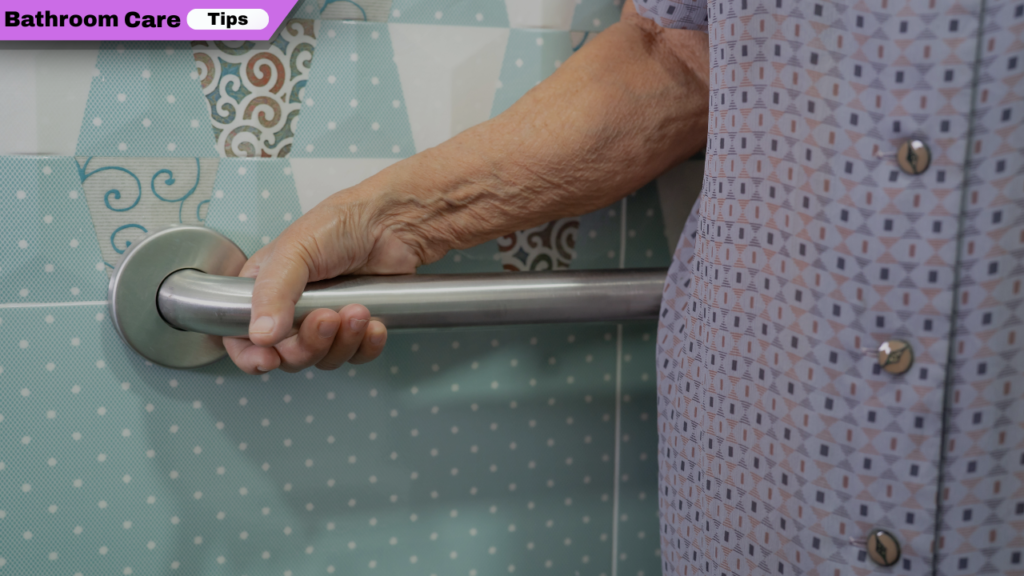
Accessible Bathtub Features Table
| Feature Number | Feature Name | Purpose | Cost Range |
|---|---|---|---|
| 1 | Low Threshold | Easy entry/exit | Built-in |
| 2 | Built-In Seat | Comfortable bathing | Built-in |
| 3 | Grab Bars | Support and stability | $50–$200 |
| 4 | Non-Slip Flooring | Prevents slips | $20–$100 |
| 5 | Handheld Showerhead | Flexible washing | $20–$100 |
| 6 | Wide Door | Wheelchair access | Built-in |
| 7 | Anti-Scald Valve | Burn protection | $50–$150 |
| 8 | Hydrotherapy Jets | Pain relief | $500–$2,000 |
| 9 | Powered Transfer Seat | Assisted mobility | $1,000–$3,000 |
| 10 | Height-Adjustable Design | Carer comfort | $1,500–$4,000 |
10 Key Features of an Accessible Bathtub
1. Low Threshold
Description: A 3–7-inch entry height, compared to 14–18 inches for standard tubs, reduces fall risks by 70%, per 2024 safety data.
Process:
- Select a tub with a 3–7-inch threshold (10 min research).
- Ensure professional installation aligns with floor level (1 day, book 5 min).
- Step over threshold, using grab bars (2 min).
- Clean entry area weekly to prevent slips (5 min).
Benefits/Drawbacks: Easy access; may leak if seals fail. Cost: Built-in. Maintenance: Inspect seals (5 min).
Tools: Grab bars, non-slip mat.
Tip: Choose outward-swinging doors for easier entry.
2. Built-In Seat
Description: Integrated seats provide comfort, used by 80% of accessible tub users, per 2024 wellness reports.
Process:
- Pick a tub with a contoured seat (10 min).
- Install with certified plumber for stability (1 day, book 5 min).
- Sit securely during bathing (2 min).
- Wipe seat weekly to prevent mold (5 min).
Benefits/Drawbacks: Reduces fatigue; limits soaking space. Cost: Built-in. Maintenance: Clean seat (5 min).
Tools: Cleaning cloth, mild detergent.
Tip: Test seat height (16–18 inches) for comfort before purchase.
3. Grab Bars
Description: Strategically placed bars offer support, cutting fall risks by 60%, per 2024 safety studies.
Process:
- Choose ADA-compliant bars (24–36 inches, 5 min).
- Install professionally on tub and walls (1 hr, book 5 min).
- Grip bars during entry/exit (2 min).
- Check screws monthly for stability (5 min).
Benefits/Drawbacks: Enhances safety; installation adds cost. Cost: $50–$200. Maintenance: Inspect bars (5 min).
Tools: Drill, grab bars.
Tip: Place bars at 33–36 inches high for optimal grip.
4. Non-Slip Flooring
Description: Textured surfaces prevent slips, critical for 90% of accessible tubs, per 2024 design trends.
Process:
- Select tub with built-in non-slip flooring (5 min).
- Verify during installation (1 day, book 5 min).
- Test traction before use (2 min).
- Clean with non-abrasive cleaner weekly (5 min).
Benefits/Drawbacks: Boosts safety; requires regular cleaning. Cost: $20–$100. Maintenance: Clean floor (5 min).
Tools: Non-slip strips, cleaner.
Tip: Add non-slip mats outside tub for extra protection.
5. Handheld Showerhead
Description: Adjustable showerheads enable targeted washing, used by 75% of accessible tub users, per 2024 surveys.
Process:
- Choose a lightweight, long-hose model (5 min).
- Install with plumber or DIY (15 min).
- Adjust spray during bathing (2 min).
- Clean nozzle monthly to prevent clogs (5 min).
Benefits/Drawbacks: Flexible; hose may tangle. Cost: $20–$100. Maintenance: Inspect hose (5 min).
Tools: Showerhead, wrench.
Tip: Opt for a model with multiple spray settings.
6. Wide Door
Description: 30-inch-wide doors accommodate wheelchairs, essential for 20% of disabled users, per 2024 accessibility data.
Process:
- Select a tub with a 30-inch door (10 min).
- Ensure installation meets ADA clearance (2 days, book 5 min).
- Open door, wheel or step in (3 min).
- Check seals weekly to prevent leaks (5 min).
Benefits/Drawbacks: Wheelchair-friendly; higher cost. Cost: Built-in. Maintenance: Inspect seals (5 min).
Tools: Measuring tape, sealant.
Tip: Ensure 30-inch front clearance for ADA compliance.
7. Anti-Scald Valve
Description: Valves maintain safe water temperatures, preventing burns for 85% of users, per 2024 safety reports.
Process:
- Choose a tub with a built-in valve (5 min).
- Install with certified plumber (1 hr, book 5 min).
- Test water temperature before bathing (2 min).
- Inspect valve annually (10 min).
Benefits/Drawbacks: Burn protection; adds plumbing cost. Cost: $50–$150. Maintenance: Test valve (5 min).
Tools: Thermometer, wrench.
Tip: Set valve to 120°F for optimal safety.
8. Hydrotherapy Jets
Description: Jets relieve pain for 50% of arthritis sufferers, per 2024 wellness studies, enhancing comfort.
Process:
- Select a tub with air or water jets (15 min).
- Install with electrical setup (2 days, book 5 min).
- Activate jets during bathing (2 min).
- Clean jets monthly to prevent mold (15 min).
Benefits/Drawbacks: Therapeutic; high cost, maintenance. Cost: $500–$2,000. Maintenance: Clean jets (15 min).
Tools: Jet cleaner, wrench.
Tip: Test jet intensity in a showroom for comfort.
9. Powered Transfer Seat
Description: Motorized seats assist mobility, aiding 30% of users with severe limitations, per 2024 accessibility reports.
Process:
- Choose a tub with a powered seat (15 min).
- Install with electrical and plumbing setup (2 days, book 5 min).
- Operate seat to transfer and bathe (5 min).
- Inspect motor monthly (10 min).
Benefits/Drawbacks: Eases transfers; expensive, complex. Cost: $1,000–$3,000. Maintenance: Check motor (10 min).
Tools: Remote control, screwdriver.
Tip: Ensure battery backup for power outages.
10. Height-Adjustable Design
Description: Adjustable heights reduce carer strain, used in 25% of care-focused tubs, per 2024 health data.
Process:
- Select a height-adjustable tub (15 min).
- Install with certified electrician (2 days, book 5 min).
- Adjust height for user or carer comfort (3 min).
- Clean mechanism monthly to prevent jams (10 min).
Benefits/Drawbacks: Carer-friendly; high cost, space needs. Cost: $1,500–$4,000. Maintenance: Inspect mechanism (10 min).
Tools: Remote, cleaning cloth.
Tip: Test height range (30–40 inches) for usability.
Benefits Table
| Feature | Safety Benefit | Comfort Benefit | Cost Impact |
|---|---|---|---|
| Low Threshold | 70% fall reduction | Easy entry | Low |
| Built-In Seat | 60% fatigue reduction | Stable seating | Low |
| Grab Bars | 60% fall reduction | Secure grip | Medium |
| Non-Slip Flooring | 90% slip prevention | Confident movement | Low |
| Handheld Showerhead | 75% washing ease | Flexible use | Low |
Tips for Using Accessible Bathtubs
- Test Features: Try seats and bars before buying (15 min).
- Maintain Regularly: Clean jets and seals weekly (10 min).
- Consult Professionals: Ensure ADA-compliant installation (20 min).
- Add Mats: Place non-slip mats outside for safety (5 min).
- Visit BathroomCareTips.com: Explore accessibility guides and reviews.
Conclusion
What Is an Accessible Bathtub? Key Features highlights how low thresholds, grab bars, and hydrotherapy jets make bathing safe and comfortable for seniors and disabled users in 2025. These tubs reduce falls by 70% and promote independence.
Frequently Asked Questions
What defines an accessible bathtub?
It’s a tub with low thresholds, seats, and safety features like grab bars, reducing fall risks by 70% for seniors and disabled users.
Who benefits from accessible bathtubs?
Seniors, wheelchair users, and those with mobility issues, with 90% reporting better independence, per 2024 wellness studies.
What are the key safety features?
Low thresholds, non-slip flooring, grab bars, and anti-scald valves cut risks by 60–90%, per 2024 safety data.
How much do accessible bathtubs cost?
Prices range from $2,500–$13,000, plus $2,500–$8,000 for installation, offering savings over assisted living costs.
Where can I learn more about accessible bathtubs?
Visit BathroomCareTips.com for 2025 guides, reviews, and tips on safe bathing solutions.
